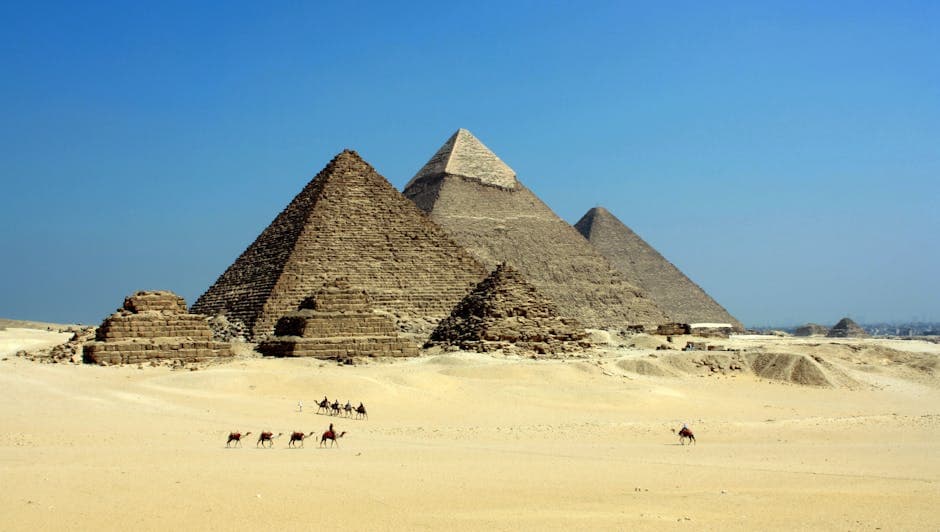Lucas Botzen
Founder & Managing Director
Last updated:
October 7, 2025
What is an Employer of Record in Egypt?
View our Employer of Record servicesAn Employer of Record, or EOR, is a company that legally hires employees on your behalf in Egypt. This means you can build a team in Egypt without setting up a local entity. The EOR handles all the legal and HR tasks, like payroll, taxes, and compliance with Egyptian labor laws. This lets you focus on managing your team's day to day work. For companies looking to hire in Egypt, providers like Rivermate offer EOR services to simplify the process.
How an Employer of Record (EOR) Works in Egypt
Using an EOR in Egypt simplifies hiring and employment. You find the talent, and the EOR takes care of the rest.
Here is how it typically works:
- You Find the Candidate: You recruit and select the person you want to hire in Egypt.
- The EOR Hires Them: The EOR legally employs the candidate through a local, compliant employment contract.
- Onboarding: The EOR manages the onboarding process, making sure all necessary paperwork is completed according to Egyptian law.
- HR and Payroll Management: The EOR handles payroll, taxes, benefits, and social security contributions.
- You Manage Your Employee: You manage your employee's daily tasks, projects, and performance, just like any other member of your team.
- Ongoing Compliance: The EOR stays up to date with any changes in Egyptian labor laws to ensure you remain compliant.
Why use an Employer of Record in Egypt
Using an EOR in Egypt can save you time and reduce risk, especially when you are new to the market. It allows you to enter the Egyptian market and hire talent quickly without the major step of establishing a legal entity there.
Here are some key benefits:
- Faster Market Entry: You can hire employees and start operations in Egypt much faster than if you had to set up your own company.
- Legal Compliance: EORs are experts in local labor laws, reducing the risk of non-compliance with complex regulations.
- Reduced Admin: The EOR takes care of all HR and administrative tasks, freeing you up to focus on your business goals.
- Cost Savings: You avoid the significant costs associated with setting up and maintaining a legal entity in Egypt.
- Access to Expertise: You benefit from the EOR's local knowledge of market norms for salaries, benefits, and cultural practices.
Responsibilities of an Employer of Record
As an Employer of Record in Egypt, Rivermate is responsible for:
- Creating and managing the employment contracts
- Running the monthly payroll
- Providing local and global benefits
- Ensuring 100% local compliance
- Providing local HR support
Responsibilities of the company that hires the employee
As the company that hires the employee through the Employer of Record, you are responsible for:
- Day-to-day management of the employee
- Work assignments
- Performance management
- Training and development
Costs of using an Employer of Record in Egypt
Rivermate's transparent pricing model eliminates complexity with a single, competitive monthly fee per employee. Unlike traditional PEO providers, our pricing in Egypt includes comprehensive HR support, benefits administration, compliance management, and access to our proprietary dashboard for real-time workforce analytics. No hidden costs, no setup fees—just straightforward pricing that scales with your business needs while ensuring full legal compliance in Egypt.
Employ top talent in Egypt through our Employer of Record service
Book a call with our EOR experts to learn more about how we can help you in Egypt







Book a call with our EOR experts to learn more about how we can help you in Egypt.
Trusted by more than 1000 companies around the globe
Hiring in Egypt
Hiring in Egypt means navigating a unique legal landscape. The primary law governing employment is the Egyptian Labour Law No. 12 of 2003. This law covers most employment relationships in the country. It's important to understand these regulations to ensure you're hiring compliantly. This guide will walk you through the key aspects of hiring in Egypt.
Employment contracts & must-have clauses
While verbal agreements are technically allowed, written contracts are highly recommended for clarity. Contracts must be in Arabic, and you'll need three copies: one for you, one for the employee, and one for the Social Insurance Office.
Your employment contracts in Egypt should include these essential clauses:
- Employer and employee details: Full names and addresses of both parties.
- Job title and description: A clear outline of the employee's role and responsibilities.
- Compensation: Details on salary and any other benefits. All salary amounts should be in Egyptian pounds.
- Contract type: Specify if the contract is for a fixed term or is indefinite.
- Work location: The primary place where the employee will work.
- Working hours: The agreed-upon daily and weekly work hours.
- Annual leave: Entitlement to paid time off.
- Social insurance: Confirmation of the employee's registration in the social insurance system.
Probation periods
You can include a probationary period in an employment contract, but it's not mandatory. This trial period allows both you and the new hire to see if it's a good fit.
Here are the key points about probation periods in Egypt:
- Maximum duration: A probation period cannot be longer than three months.
- Single period: You can't place an employee on probation more than once.
- Termination: During the probation period, either you or the employee can end the employment relationship without notice.
Working hours & overtime
The standard workweek in Egypt is 48 hours, spread over six days. The typical workday is eight hours.
Here's a breakdown of working hours and overtime:
| Category | Details |
|---|---|
| Standard Hours | 8 hours per day, 48 hours per week. |
| Breaks | Employees get at least one hour of break time, which is not included in working hours. |
| Overtime | Work beyond the standard hours is considered overtime. |
| Overtime Pay | Daytime overtime is paid at 135% of the regular rate, and nighttime overtime is 170%. |
Public & regional holidays
Employees in Egypt are entitled to paid leave on public holidays. The number of official public holidays can vary slightly each year.
Some of the main public holidays in Egypt for 2024 include:
- Coptic Christmas Day (January 7)
- January 25 Revolution Day
- Eid al-Fitr
- Sinai Liberation Day (April 25)
- Labour Day (May 1)
- Sham El Nessim
- Arafat Day
- Eid al-Adha
- June 30 Revolution Day
- Islamic New Year
- Prophet Muhammad's Birthday
- Armed Forces Day (October 6)
Hiring contractors in Egypt
Engaging independent contractors can be a flexible option for your business. However, it's crucial to classify workers correctly to avoid legal risks.
An independent contractor in Egypt manages their own taxes and social security contributions. They have more control over their work and are not entitled to the same benefits as employees.
Misclassifying an employee as a contractor can lead to serious consequences, including fines and back payments for benefits. An Employer of Record (EOR) can help you mitigate this risk. An EOR ensures that your workers are classified correctly and that you comply with all local labor laws. This allows you to focus on your business while the EOR handles the legal complexities of employment.

Compensation and Payroll in Egypt
In Egypt, handling compensation and payroll means following a clear set of rules. You pay your team monthly, and it's important to get the details right to stay compliant with local labor laws. This involves understanding salary structures, social security contributions, and taxes. Your payroll process will include calculating wages, withholding the correct taxes, and making contributions for social insurance.
Payroll cycles & wage structure
Egypt operates on a monthly payroll cycle. You should pay your employees by the last working day of the month, or no later than the 5th of the following month. While some companies offer a 13th-month salary or performance bonuses, these are not required by law.
Every month, you must provide a payslip with a clear breakdown of:
- Basic salary
- Income tax withheld
- Social security contributions
- Health insurance contributions
- Any other allowances or deductions
Overtime & minimums
The standard workweek in Egypt is 40 to 45 hours, spread over five days. A one-hour break is mandatory and not included in the work hours. If your employees work beyond the standard hours, you need to pay them overtime. The overtime pay is an additional 35% for daytime hours and 70% for nighttime hours.
As of March 2025, the minimum wage for private sector employees is EGP 7,000 per month.
Employer taxes and contributions
As an employer, you are responsible for contributing to social insurance and health insurance for your employees. These contributions cover pensions, disability, unemployment, and illness.
| Contribution | Employer Rate | Notes |
|---|---|---|
| Social Insurance | 18.75% | This covers old age, disability, death, and unemployment. The contribution is calculated on a salary capped at EGP 14,500 per month as of 2025. |
| Health Insurance | 3.25% | This is calculated on the employee's insurable wages. |
Employee taxes and deductions
Employees also contribute to social security and health insurance, and they pay a progressive income tax.
Social Security and Health Insurance
| Contribution | Employee Rate | Notes |
|---|---|---|
| Social Insurance | 11% | This is deducted from the employee's salary. |
| Health Insurance | 1% | An additional 3% is contributed for an unemployed spouse and 1% for each dependent. |
Income Tax Rates
Income tax is calculated on the net salary after deducting social insurance contributions and a personal exemption of EGP 15,000 annually.
| Taxable Income (EGP) | Tax Rate |
|---|---|
| Up to 40,000 | 0% |
| 40,001 – 55,000 | 10% |
| 55,001 – 70,000 | 15% |
| 70,001 – 200,000 | 20% |
| 200,001 – 400,000 | 22.5% |
| 400,001 – 1,200,000 | 25% |
| Over 1,200,000 | 27.5% |
How an Employer of Record, like Rivermate can help with payroll taxes and compliance in Egypt
An Employer of Record (EOR) manages monthly payroll calculations, employer contributions, and tax filings in-country on your behalf. Rivermate handles registrations, payslips, statutory reporting, and remittances to authorities so you stay compliant with local rules and deadlines—without setting up a local entity. Our specialists monitor regulatory changes and ensure correct rates, thresholds, and caps are applied to every payroll cycle.
Loading calculator...
Benefits and Leave in Egypt
In Egypt, employees who have worked for a company for over six months are entitled to a range of benefits. These include social security, health insurance, and various types of paid leave. This ensures that employees have a safety net and time off to rest and observe important holidays.
Statutory leave
Egyptian labor law provides several types of leave for employees.
- Annual Leave: Employees receive a minimum of 21 days of paid annual leave after working for an employer for at least six months. This increases to 30 days for employees who have worked for the same employer for ten consecutive years or are over the age of 50.
- Sick Leave: Employees can take up to six months of sick leave. For the first 90 days, they receive 75% of their regular pay, which increases to 85% for the following 90 days.
- Maternity Leave: Female employees are entitled to 90 days of paid maternity leave.
- Pilgrimage Leave: An employee who has worked for the same employer for at least five consecutive years can take a one-time paid leave of up to one month for a religious pilgrimage.
- Casual Leave: Employees can take up to six days of casual leave per year, which is deducted from their annual leave.
Public holidays & regional holidays
Employees in Egypt are entitled to paid leave on public holidays. If an employee is required to work on a public holiday, they are entitled to double their usual wage.
| Holiday | Date |
|---|---|
| Coptic Christmas Day | January 7 |
| Revolution Day and National Police Day | January 25 |
| Eid Al-Fitr | March 30 - April 1 |
| Sham El-Nessim | April 21 |
| Sinai Liberation Day | April 25 |
| Labor Day | May 1 |
| Arafat's Day | June 5 |
| Eid Al-Adha | June 6 - June 9 |
| Islamic New Year | June 26 |
| June 30 Revolution | June 30 |
| The July 23 Revolution Day | July 23 |
Typical supplemental benefits
In addition to the mandatory benefits, many employers in Egypt offer supplemental benefits to attract and retain talent.
| Statutory Benefits | Non-Statutory (Supplemental) Benefits |
|---|---|
| Social Insurance (includes health, disability, maternity) | Private Medical Insurance |
| Minimum Wage | Annual Bonuses |
| Paid Leave (Annual, Sick, Maternity, Public Holidays) | Private Pension Schemes |
| Overtime Pay | Life and Disability Insurance |
| Termination Rules | Transportation Allowance |
| Unemployment Compensation | Telecommunication Allowance |
| Disability Insurance | Meal Allowance |
How an EOR can help with setting up benefits
An Employer of Record (EOR) simplifies the process of setting up employee benefits in Egypt. Instead of establishing a local entity, which can be time-consuming, you can use an EOR to hire employees on your behalf.
An EOR will:
- Ensure compliance with Egyptian labor laws regarding compensation and benefits.
- Manage payroll and disburse benefits to your employees.
- Help you offer competitive supplemental benefits to attract top talent.
- Handle all the administrative tasks associated with benefits management.
How an Employer of Record, like Rivermate can help with local benefits in Egypt
Rivermate provides compliant, locally competitive benefits—such as health insurance, pension, and statutory coverages—integrated into one EOR platform. We administer enrollments, manage renewals, and ensure contributions and withholdings meet country requirements so your team receives the right benefits without added overhead.
Termination and Offboarding in Egypt
When an employment relationship in Egypt ends, you need to follow a specific process. This ensures everything is fair and legal for both you and your employee. The process involves notice periods, potential severance pay, and final documentation. It's a structured way to handle departures, whether they are resignations or dismissals.
Notice periods
When you or your employee decides to end an indefinite contract, a notice period is required. The length of this period depends on how long the employee has worked for you.
- Less than 10 years of service: The notice period is two months.
- 10 years of service or more: The notice period is three months.
For fixed-term contracts, the agreement is expected to last until its end date. However, the contract may include terms for ending it early. In cases of serious misconduct, you can dismiss an employee without notice.
Severance pay
Severance pay is not always required in Egypt. It mainly applies when you terminate an employee's contract without a valid reason. If you end an indefinite contract without just cause, the employee is entitled to at least two months' gross salary for each year of service.
For fixed-term contracts that you terminate without cause before the end date, you must pay the employee their remaining wages for the contract's duration.
How Rivermate handles compliant exits
We make sure every termination and offboarding in Egypt is fully compliant with local labor laws. We manage the entire process so you don't have to worry about the details.
Here’s how we handle it:
- Clear Documentation: We prepare all necessary documents, including the written notice of termination. This notice clearly states the reason for the termination and the effective date.
- Fair Investigations: If the termination is for cause, we ensure a proper investigation is conducted. This gives the employee a chance to present their side.
- Final Settlement: We take care of the final settlement of all dues. This includes any unpaid salary, unused vacation days, and other benefits.
- Official Notifications: We handle informing the relevant authorities, like the Social Insurance Organization, about the employee's departure.
We guide you through each step to ensure a smooth and lawful exit process for your employees in Egypt.
Visa and work permits in Egypt
Navigating the visa and work permit process in Egypt is essential for any company looking to hire foreign talent. The system requires all foreign nationals who intend to work in the country to secure a work permit, which is issued by the Ministry of Manpower and Immigration. This process is closely tied to the employee's visa status, and it's important to understand the steps involved to ensure compliance. Typically, a foreign worker will enter Egypt on a temporary or tourist visa, which is then converted into a work visa upon the approval of the work permit.
Employment visas & sponsorship realities
An Employer of Record (EOR) with a legally registered entity in Egypt can sponsor work permits for foreign employees. This can be a practical solution for companies that do not have their own local entity. Here's what you need to know:
- Sponsorship is necessary: Foreign nationals cannot apply for a work permit on their own; it must be sponsored by an employer in Egypt.
- Quotas are in place: Egyptian labor law includes a quota system that limits the number of foreign workers a company can hire. Generally, non-Egyptian employees should not exceed 10% of the total workforce.
- Process overview: The employer, or EOR, handles the application with the Ministry of Manpower and Immigration. This includes justifying the need to hire a foreign national over a local candidate.
- From entry to work: The employee usually enters Egypt on a tourist visa. Once the work permit is being processed, this visa is converted to a work visa, allowing the individual to legally work.
An EOR can manage the complexities of this process, including the necessary legal paperwork and communication with Egyptian authorities, to ensure everything is handled correctly.
Business travel compliance
For short-term business activities, a business visa is the appropriate route. It's important to distinguish this from a work permit, as a business visa does not authorize employment in Egypt.
Here are the key aspects of business travel compliance:
- Permitted activities: A business visa is suitable for activities like attending meetings, conferences, and negotiating contracts.
- Application process: To obtain a business visa, you will likely need to provide documents such as a valid passport, a letter of invitation from an Egyptian company, and a cover letter from your own company.
- E-visas and visa on arrival: For some nationalities, it is possible to get an e-visa or a visa on arrival for business purposes. These are typically for short stays of up to 30 days.
- Proof of purpose: Even with an e-visa or visa on arrival, it is advisable to carry a letter from your company or an invitation letter to prove the business purpose of your visit.
Always check the specific requirements for your nationality before traveling, as procedures can vary.
How an Employer of Record, like Rivermate can help with work permits in Egypt
Navigating work permits can be complex and time‑sensitive. Rivermate coordinates the entire process end‑to‑end: determining the right visa category, preparing employer and employee documentation, liaising with local authorities, and ensuring full compliance with country‑specific rules. Our in‑country experts accelerate timelines, minimize refusals, and keep you updated on each milestone so your hire can start on time—legally and confidently.
Frequently asked questions about EOR in Egypt
About the author

Lucas Botzen
Lucas Botzen is the founder of Rivermate, a global HR platform specializing in international payroll, compliance, and benefits management for remote companies. He previously co-founded and successfully exited Boloo, scaling it to over €2 million in annual revenue. Lucas is passionate about technology, automation, and remote work, advocating for innovative digital solutions that streamline global employment.
